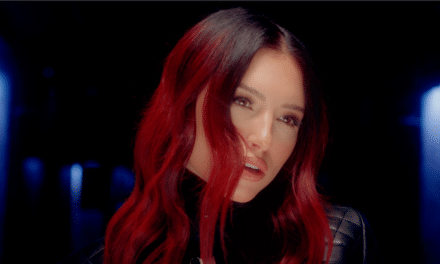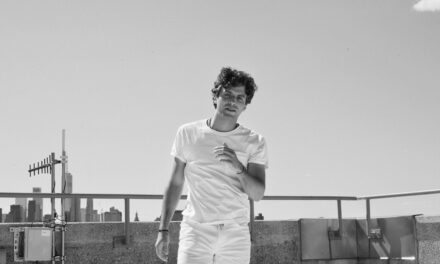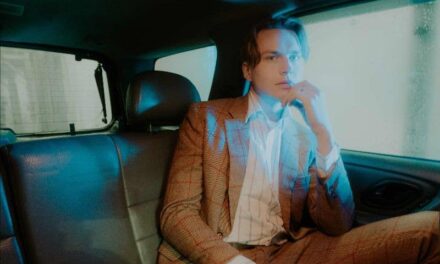With singers from diverse musical and cultural backgrounds, there is room for everyone to bring their individuality while creating a whole new sound together. To “assemble” means to gather as one and with each singer bringing an essential ingredient, the result is a unity of global spices creating a brand new flavour of their own.
“Blue Monday” is Assemble’s debut release. They wanted to celebrate the originality and impact of this classic electronic track, while doing something different; using the human voice to express electronic instruments. Having a female lead vocal gives a different lyrical weight, and in light of some of the seismic events over the past year, they uncovered a whole new interpretation and tried to communicate this.
The lead vocalist Barbara Pursey shares, “The single is not so much a protest narrative but a recognition of self and others and how we can come together through working together to see and appreciate our differences and similarities with a big dance at the end… HOPE.”
Tell us about the genesis of your project. How did you get to where you are now?
This is our first release as a vocal collective. Although Juliet (Russell, Assemble’s MD) officially founded the group, we had all worked together on various projects over the years as singers in the London music scene. It felt like the right time to come together artistically.
What does music and being a group mean to you?
I think for all of us the primary way we express ourselves creatively is with our voice. Being in this group is about having a space where you can be yourself and you are valued for that, but also building something with others – it’s like a festival with loads of different tents and stages, but the festival itself still has its own identity
What are some sources of inspiration for your lyrics and storytelling?
The song was written by New Order and one of the things that makes the original so enigmatic is that the lyrics are very ambiguous, but there’s still such a tangible vibe, that makes you want to invent your own interpretation of the story. Barbara (Pursey) sings the lead vocal and there’s something about having a female lead that makes you listen to the lyrics afresh. This is amplified in the video. Barbara’s performance takes the song’s narrative to a different place, which reflects what’s been going on in the past year and a half.
Who is an artist that you look up to more than others today?
We love Laura Mvula. She’s someone who has such a unique musical vision. She’s a bold performer and she keeps evolving. Plus her vocal harmonies are absolutely incredible.
Favorite activity to blow off some steam?
Roller skating!
Tell us about your latest release and how it came about
We started working on it before lockdown last year and had planned to create a show in September, but obviously that didn’t happen! We still wanted to create together and to stay connected so recorded the parts individually, which as a choir we would never usually do!
You seem to be fusing rap with R&B and other musical genres. What inspires your sound?
In a way, the rhythms of the city. London has such a fusion of cultures, of music, food, people, languages and rhythms. Everyone brings something to the party.
What are some things you do to deal with anxiety and creative blocks?
As a group we are getting better at communicating how we feel and what we need, and we try to support each other through those things. Creative blocks are part of being an artist and they don’t mean you’re not any good or not productive, they just mean you need to find a bit of movement somewhere. Do something else, go for a walk, get inspired by a different art form or by someone who has overcome something massive or defied the odds, or just treat yourself to an afternoon off!
Where do you see yourself in 5 years?
Collaborating with innovative artists who want to expand musical boundaries and celebrate the power of the human voice in uplifting people and bringing us together.
Your style is very original and elaborate. How do you take care of your aesthetics?
Thank you. I think there are 2 main things – knowing your destination and being open to how you get there. Collaboration is key – getting the right people in the roles that add that extra something that you couldn’t do by yourself.
We do spend time on the aesthetics in the sense that there’s a vision, then within that it’s important that everyone expresses themselves in a way that feels authentic and meaningful to them, while still embracing a sense of the bigger picture. In this project Juliet led the sonic vision, which was then fully realised by Jeff Knowler who mixed the track. Barbara, Juliet and Katie (Edwards, the video’s director) led the visual aesthetic, alongside Becky Seager who styled the video. Omari Carter led the choreography and Thumb Mkandla made everyone look their best selves through the hair and make up. Creative conversations, talented collaborators and active listening are key.
What was the most daunting moment in your career so far?
With this project we lost directors shortly before filming not once, but twice – Covid times! Having to cancel, reschedule everything, change the approach and find another director felt daunting at the time, but ultimately the project has benefitted from having the right people coming together at the right time.
What is the best advice you’ve ever gotten?
One of Assemble, Simone Niles says “Build the plane while you fly”. Don’t wait. Just do what you need to do to get something off the ground and keep adjusting, growing and improving as you go.
Where do you think the music and entertainment industry is headed after this past year?
One thing is certain – people will still be getting together to make and celebrate music. Humans are musical and music is a fundamental way in which we communicate, connect and collaborate.
To paraphrase William Burroughs “artists are architects of change” and it is clear that we need change. There’s a need to celebrate and listen to diverse voices, to embrace different lived experiences and to actually do the work in dismantling limiting beliefs and systems about who has access to what and who has a right to be heard. Outside of performing a lot of our work is about using voice as a way to build confident creative expression, empowerment and connection.





